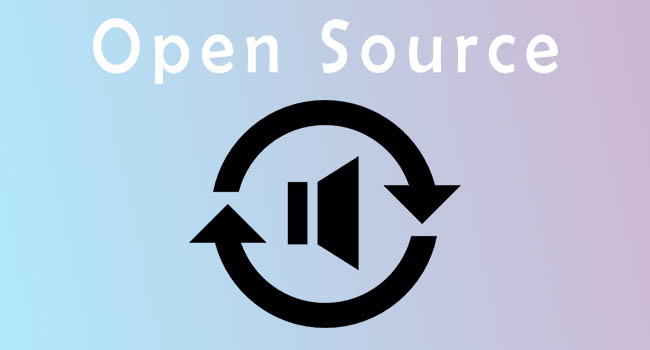The Rise of Audio AI: 10+ Open-Source Models Redefining How Machines Speak, Listen, and Sing in 2025
In 2025, audio-based AI is no longer just a futuristic concept—it's a core pillar of the next wave of intelligent systems. While large language models (LLMs) have transformed how we interact with machines through text, a new generation of open-source audio AI models is enabling machines to talk, listen, mimic, and even compose music.

Whether you're a developer building a voice assistant, a content creator seeking custom voiceovers, or a researcher exploring new modalities, this deep dive highlights the most exciting and accessible audio AI tools you should know.
Let’s explore six transformative categories:
Conversational AI: Giving Machines a Voice That Feels Human
Conversational AI is designed to enable voice-based interactions that sound natural, dynamic, and emotionally aware.
Dia-1.6B
A context-aware open-source text-to-speech (TTS) model, Dia-1.6B turns scripted dialogues into realistic spoken conversations. It captures tone, timing, emotional cues, and even non-verbal sounds like sighs or laughter—making it ideal for games, virtual assistants, or audio storytelling.
Sesame-CSM-1B
Built by the Sesame AI team (co-founded by an Oculus VR pioneer), this LLaMA-based conversational TTS model excels in producing smooth, fluent responses. While it lacks full emotional expression, it allows style transfer through short audio prompts and delivers clean, lifelike speech based on text or audio input.
Use Case: Integrate these models into AI-powered customer service chatbots or interactive role-play games to create lifelike voice-driven interfaces.
Voice Cloning: Replicating Any Voice in Seconds
Voice cloning models can recreate a person’s voice from just a few seconds of audio. This opens up possibilities in dubbing, personalized assistants, and audio storytelling.
F5-TTS
A zero-shot voice cloning model, F5-TTS can accurately mimic a speaker from just 10 seconds of input—no additional training required. Despite its minimal resource footprint, it delivers high-fidelity audio on consumer-grade hardware.
Fish-TTS ( OpenAudio S1 )
Fish-TTS ( OpenAudio S1 ) stands out for multilingual cloning and phoneme-free architecture. It handles diverse scripts (Latin, Arabic, Japanese, etc.) and generates consistent voice across languages. It's an ideal pick for creators working across regions.
Zonos (Zyphra Zonos)
Trained on over 200,000 hours of data, Zonos supports emotional modulation and speed control. Whether you want a sad monologue or a cheerful narration, Zonos can adapt accordingly.
Creative Tip: Use these tools to build an audiobook with your own voice—or generate character voices for animation in multiple languages.
Lightweight TTS: Efficient, Real-Time Speech Generation
TTS models convert written text into spoken words, essential for reading tools, accessibility apps, and smart devices.
Kokoro-82M
With just 82 million parameters, Kokoro offers excellent audio quality on lightweight devices like smartphones. Ideal for embedded systems or apps requiring fast, natural speech synthesis without cloud dependencies.
Spark-TTS
Combining LLM integration and bilingual support, Spark-TTS handles English-Chinese mixed sentences fluidly. It also supports zero-shot cloning, making it a strong candidate for education platforms or dual-language voiceovers.
Explore More TTS Tools on AI-Kit
Music Generation: Turning Text Prompts into Songs
Music generation AIs compose original music based on textual or symbolic input—useful for video creators, game developers, and hobbyist musicians.
Meta MusicGen
Trained on licensed audio, MusicGen can interpret phrases like “calm piano melody with soft rain sounds” and produce matching compositions. Different model sizes offer trade-offs between speed and fidelity.
ACE-Step
With generation speeds up to 15x faster than legacy systems, ACE-Step creates full 4-minute tracks within 20 seconds on high-end GPUs. It maintains melodic structure and is customizable for genre, instruments, and lyrical input.
Scenario: Need quick theme music for a YouTube intro? MusicGen or ACE-Step can handle it in minutes.
ASR (Automatic Speech Recognition): Turning Voice Into Text
ASR systems transcribe spoken audio into text. They're essential for voice search, meeting transcripts, subtitles, and accessibility tools.
OpenAI Whisper
Trained on over 680,000 hours of multilingual audio, Whisper is known for its near-human transcription accuracy. It’s resilient to noise, accents, and cross-language input, and even supports audio-to-English translation.
NVIDIA Parakeet-v2
An ASR powerhouse, Parakeet-v2 achieves ultra-fast transcription (1 hour of audio in 60 seconds) and leads open benchmarks with <6% WER. Bonus: it includes punctuation, capitalization, and lyric transcription.
Check out similar transcription tools for productivity use cases.
Audio-to-Audio AI: Beyond Text — A Talking, Listening Machine
Audio-to-audio models can accept audio prompts and respond with audio outputs, merging recognition and generation into a single system.
Kimi-Audio
Kimi-Audio is a foundational audio model that supports voice Q&A, emotional detection, audio chat, and more. It processes raw audio as tokens, making it capable of understanding and generating complex conversational flow in voice format.
Imagine building a voice assistant that not only transcribes your command but answers back in natural speech, tailored to your tone—Kimi makes this possible.
Audio AI Is the Future of Human-Machine Interaction
In 2025, open-source audio AI models are not just research experiments—they’re practical, powerful, and freely available. From voice synthesis to multilingual cloning, real-time music generation, and fast, accurate transcription, these tools are redefining how we interact with machines.
And the best part? Most of them are available on GitHub and platforms like Hugging Face, ready for you to build, remix, or experiment.
If you're a developer, creator, or simply curious about what's next in AI, this is your moment to dive into audio. Choose a model, create a vocal avatar, compose a track, or build your next-gen assistant.
Because the future of AI interaction?
It’s not just text anymore. It’s a conversation.
👉 Keep exploring AI-Kit's Audio & Voice category for more tools and creative applications.